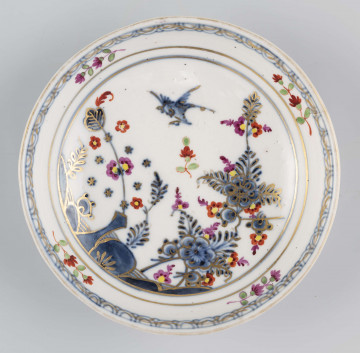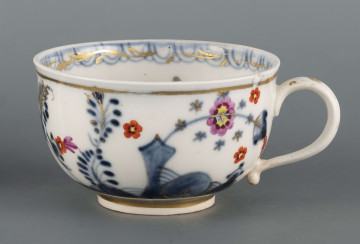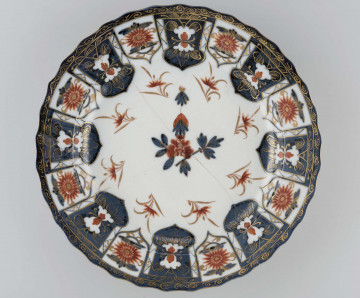
Saucer
1890 — 1800
National Museum in Lublin
Part of the collection: Faience, ceramic and metal vessels and items
The octagonal balass vase with a high base and a bulging body, decorated in underglaze with dark blue cobalt, was originally part of a more oversized decorative suit.
In Europe in the 17th and 18th centuries, numerous faience manufactories began to emerge, producing dishes imitating white gold, namely, porcelain imported from China and Japan. At first, the porcelain was decorated with Far-Eastern ornaments, but soon the new manufactories introduced native motifs, with floral and figural compositions, which appealed to the taste of Europeans. The high production cost of white gold contributed to the fast popularisation of faience products, which less-wealthy people could afford. Thus, earthenware from European manufactories became a substitute for unattainable but still fashionable Far Eastern porcelain wares. The increasing popularity of ceramic products also contributed to the potters’ continuous attempts at improving the mass used to make tableware, vases and figurines.
The rapid development of new technologies meant that, by the end of the 18th century, most of the European faience factories were already bankrupt due to the growing popularity of the so-called fine faience, invented in England and French and German products. Thus, in a short time, the fine (also called English) faience dominated the European ceramics market.
Author / creator
Dimensions
cały obiekt: height: 10 cm, width: 30 cm, diameter: 17 cm
Object type
dish
Technique
decorating ceramic by painting
Material
faience
Creation time / dating
Creation / finding place
Owner
The National Museum in Lublin
Identification number
Location / status

1890 — 1800
National Museum in Lublin

1790 — 1800
National Museum in Lublin

1730 — 1735
National Museum in Lublin
DISCOVER this TOPIC
Museum of King Jan III's Palace at Wilanów
DISCOVER this PATH
Educational path